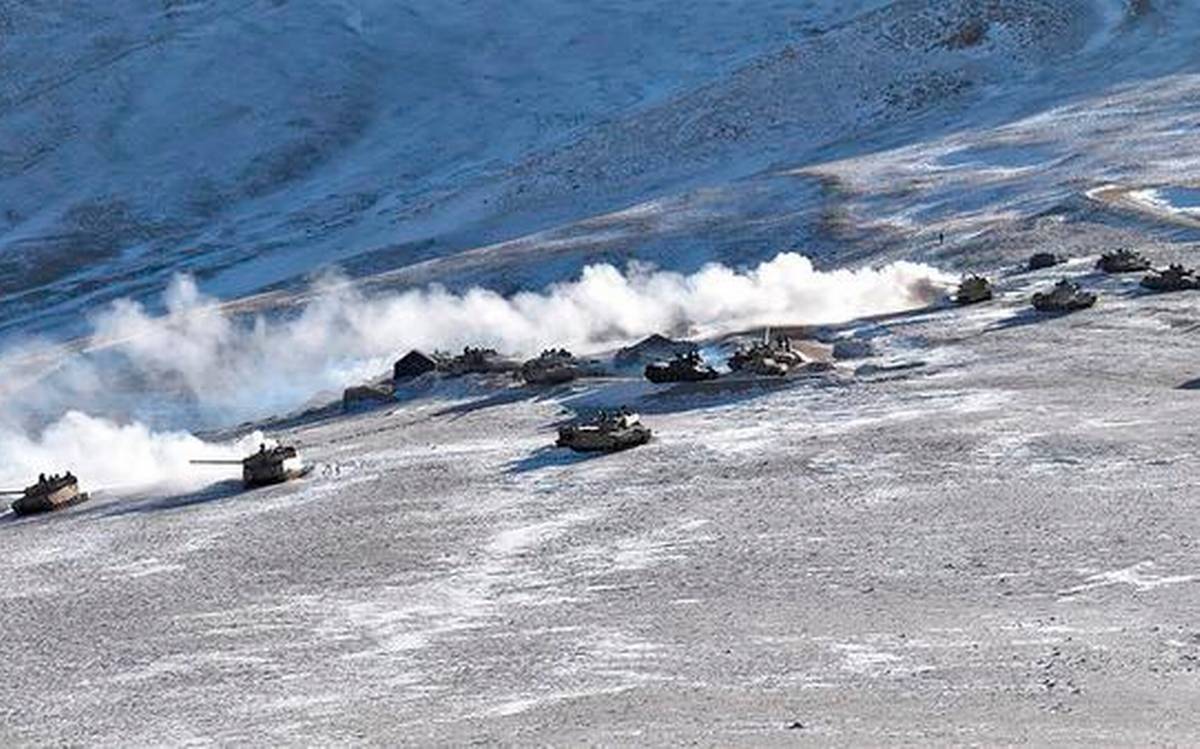After a month-long freeze on Line of Actual Control (LAC) disengagement talks, Indian and Chinese diplomats decided to reconvene talks between border commanders “at an early date”. The decision was made at the 23rd meeting of the Working Mechanism for Consultation & Coordination on India-China Border Affairs (WMCC) that is led by Foreign Ministries on both sides and comprises diplomatic, border security and military officials. The officials also agreed that they must “ensure a stable ground situation and avoid any untoward incident” in the interim, until the situation is resolved. The 13th round of border commander talks on October 10 ended with an acrimonious exchange between both sides.
“It was agreed that both sides should hold the next (14th) round of the Senior Commanders meeting at an early date to achieve the objective of complete disengagement from all the friction points along the LAC in the Western Sector in accordance with the existing bilateral agreements and protocols,” said the statement issued by the Ministry of External Affairs (MEA) on November 18, after virtual talks led by additional secretary (East Asia) Naveen Srivastava and Director-General of the Boundary & Oceanic Department of the Chinese Ministry of Foreign Affairs Hong Liang, that said “candid and in-depth discussions” were held. This is the 9th round of WMCC talks just in the last year since the Galwan incident in June 2020, compared to the past when bi-annual meetings had been held since the mechanism was launched in 2012, an indication of the seriousness of the situation between the two militaries at present.
While the MEA statement was more specific about the desired outcome being “complete disengagement”, and India has been keen to complete disengagement in areas like Hot Springs, Demchok and Depsang where massive troop deployments continue well into the winter season, China has reportedly been more reticent on committing to any further disengagement after the agreements on Pangong Tso (lake) area and Gogra point were completed earlier in 2021, and only spoke of resolving “remaining issues”.
The statement from China’s Ministry of Foreign Affairs said both sides had agreed, in accordance with the understanding reached by the Freign Ministers S. Jaishankar and Wang Yi in Dushanbe in September, to “continue their efforts to further de-escalate the border situation”, and would “strive to shift from urgent dispute settlement to regular management and control at an early date.” Beijing said both sides also agreed “to consolidate existing achievements of disengagement”, and abide by bilateral agreements “to avoid recurrence” of incidents.
Despite the differences, the releases after the WMCC talks were in stark contrast to the openly accusatory language in statements that followed the 13th round of military talks, and indicates a new resolve by both sides to continue LAC talks.
Worldview with Suhasini Haidar | Have India-China talks at the LAC hit an impasse?
A statement from New Delhi in October said India had made “constructive suggestions for resolving the remaining areas but the Chinese side was not agreeable and also could not provide any forward-looking proposals,” and blamed “unilateral attempts of Chinese side to alter the status quo” for the situation. The Chinese military had laid the blame at India for the stalemate saying it had made “unreasonable and unrealistic demands” and “hoped that the Indian side should avoid misjudging the situation and cherish the hard-won situation in the China-India border areas.”




%20Qawwal%20note.jpg)
%20Makar%20Sankranti%20.jpg)




0 Comments